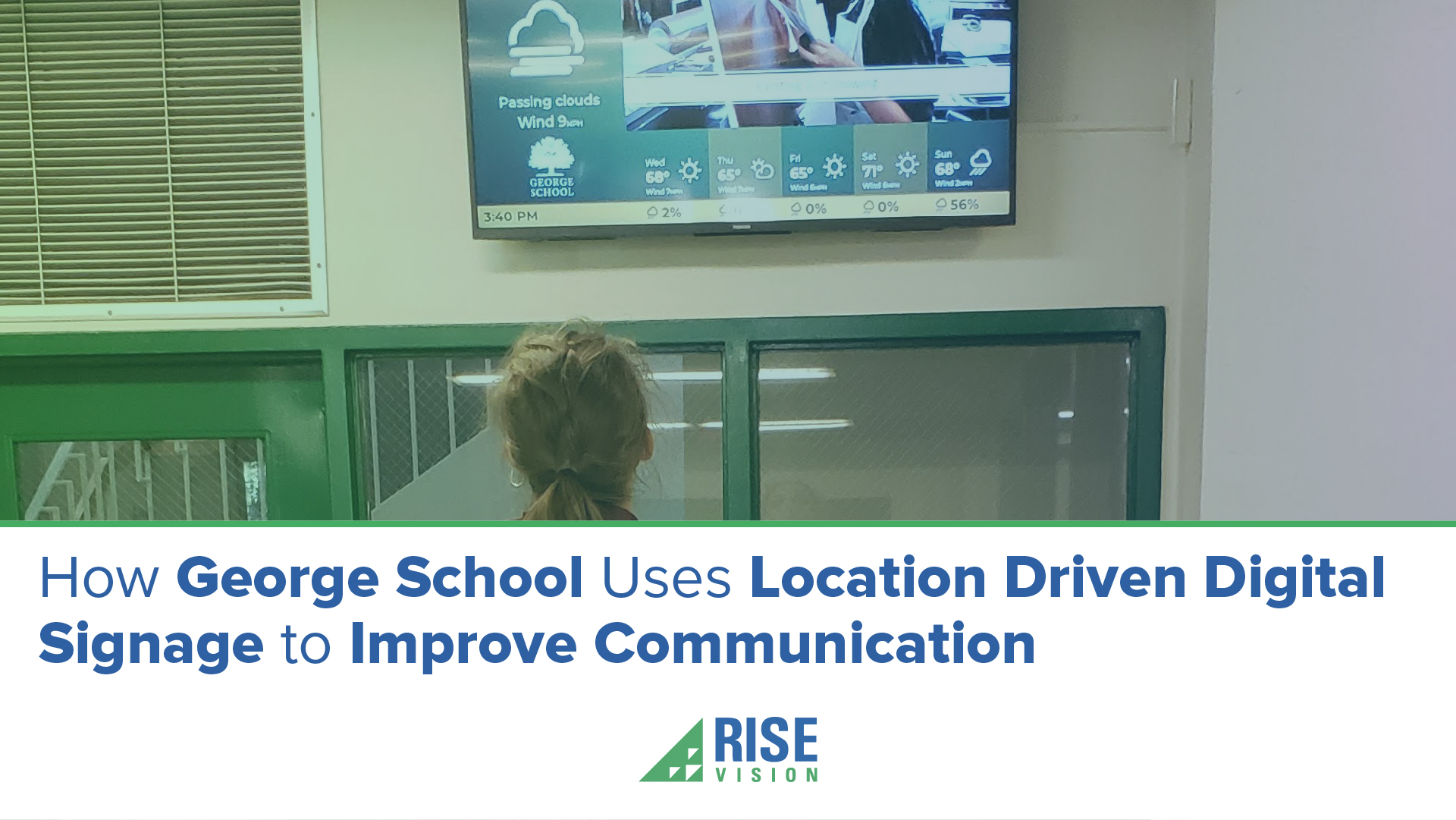Rise Vision’s Digital Signage Solutions Revamp 128-Year-Old Quaker School
 Rise Vision has released a new case study of George School, a 128-year-old Quaker coeducational boarding and day school in Pennsylvania. It’s home to 540 students representing 37 countries and 18 states. With 1,300 K-12 students, the school is the second-largest Christian school in the state of North Carolina.
Rise Vision has released a new case study of George School, a 128-year-old Quaker coeducational boarding and day school in Pennsylvania. It’s home to 540 students representing 37 countries and 18 states. With 1,300 K-12 students, the school is the second-largest Christian school in the state of North Carolina.
Well known for academic excellence, George Schools has a 95% IB Diploma completion rate, one of the world’s highest. Michael Hodgin is the Director of Technology at George School and has been with the school since 2000.
George School uses a location-driven communication strategy. The people who run each location manage the content for the digital signs in their area. The signage shows 70% location-specific content and 30% content that is relevant to the whole school. George School’s approach to digital signage is practical. They get many people involved in managing content. They reuse content from several sources. And they avoid trying to share everything with everyone and instead keep their messages targeted.
Digital signage has always been compelling to Michael, and he first got into it almost ten years ago. Michael started by researching paid and free solutions for George School. Unfortunately, Michael’s research found that most paid digital signage solutions were too expensive, and the free solutions were too complicated to set up and manage. Then, in 2014 a peer-recommended Rise Vision to Michael. The timing was perfect as George School had a new athletic center that needed signage. Michael tried out Rise Vision and was impressed by the low cost and ease of use. Michael got funding and started the process to get their digital signage up and running.
To start, Michael installed four digital signs in the George School athletic center. The displays show athletic photos, a Twitter feed, a sporting events calendar, news from the Dean, and more. George School has since expanded to 12 digital signs. The digital signs are in common areas, the science center, admissions office, dining hall, Dean’s office, library, art department, and the athletics center.
George School uses a location-driven communication strategy. The people who run each location manage the content for the digital signs in their area. There are now nine people logging into Rise Vision and making changes to the content. The signage shows 70% location-specific content and 30% content that is relevant to the whole school. This ratio changes in common areas, which display information relevant to everyone.
George School sources content from a variety of places:
- They pull content from the school and athletics Twitter accounts
- Most locations have a Google Slides presentation specific to them
- The digital signs pull stories via RSS from the Dean’s blog
- And they are frequent users of the Rise Vision templates
Some examples of content that George School shows are:
- Sharing meal menus
- Bulletins and announcements from the Dean
- Athletic events, photos, and news
- Student artwork
- Upcoming theater events
- The daily school schedule
View more of the case study here.


